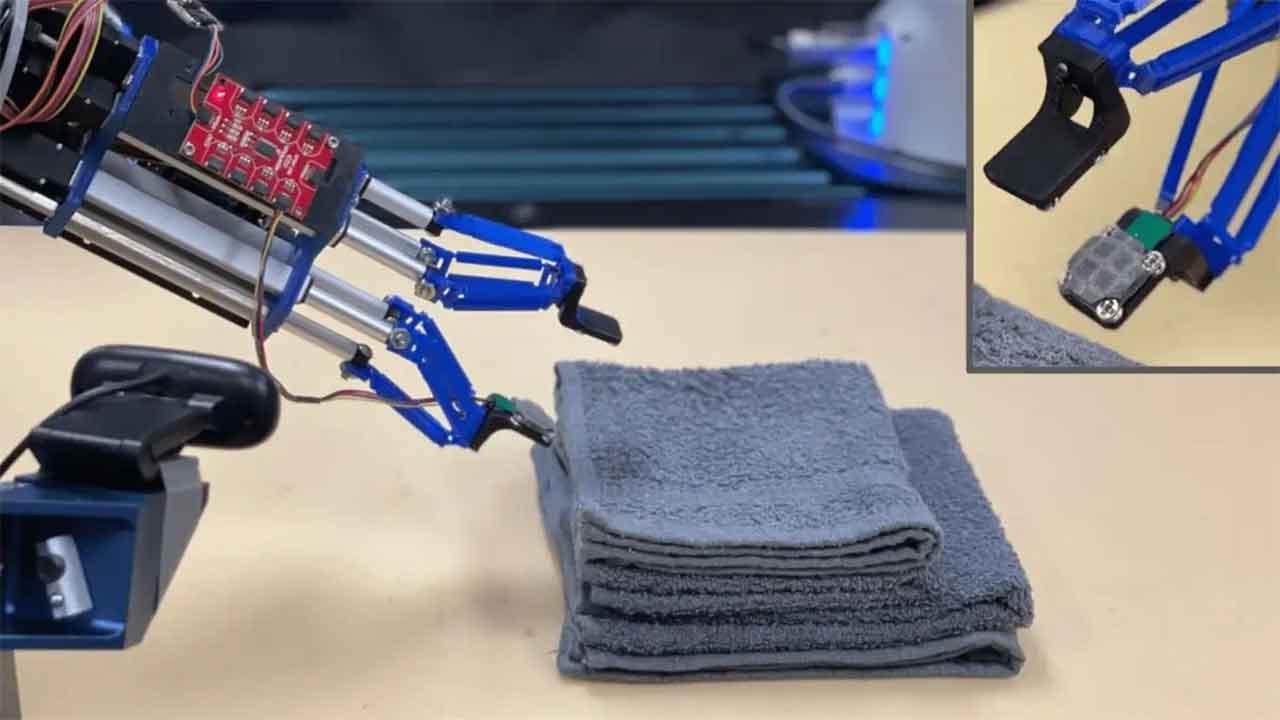Tactile robot with a sense of touch can fold laundry

Why can you buy a robot vacuum cleaner easily, but not one that folds laundry or irons clothes? Because fabric is actually a very difficult thing for robots to manipulate. But scientists have made a breakthrough with a robot designed to have tactile senses.
Fabric is soft, and deformable, and requires a few different senses firing to pick up. This is why the fashion industry is so labour-intensive: it’s too hard to automate.
“Humans look at something, we reach for it, then we use touch to make sure that we’re in the right position to grab it,” says David Held, an assistant professor in the School of Computer Science, and head of the Robots Perceiving and Doing Lab, at Carnegie Mellon University, US.
“A lot of the tactile sensing humans do is natural to us. We don’t think that much about it, so we don’t realise how valuable it is.”
When we’re picking up a shirt, for instance, we’re feeling the top layer, sensing lower layers of cloth, and grasping the layers below.
But even with cameras and simple sensors, robots can usually only feel the top layer.
But Held and colleagues have figured out how to get a robot to do more. “Maybe what we need is tactile sensing,” says Held.
The Carnegie Mellon researchers, along with Meta AI, have developed a robotic ‘skin’ called ReSkin.
It’s an elastic polymer, filled with tiny magnetic sensors.
“By reading the changes in the magnetic fields from depressions or movement of the skin, we can achieve tactile sensing,” says Thomas Weng, a Ph.D. student in Held’s lab, and a collaborator on the project.
“We can use this tactile sensing to determine how many layers of cloth we’ve picked up by pinching, with the sensor.”
The ReSkin-coated robot finger could successfully pick up both one and two layers of cloth from a pile, working with a range of different textures and colours.
“The profile of this sensor is so small, we were able to do this very fine task, inserting it between cloth layers, which we can’t do with other sensors, particularly optical-based sensors,” says Weng.
“We were able to put it to use to do tasks that were not achievable before.”
The robot is not yet capable of doing your laundry: next on the researchers list is teaching it to smooth crumpled fabric, choosing the correct number of layers to fold, then folding in the right direction.
“It really is an exploration of what we can do with this new sensor,” says Weng.
“We’re exploring how to get robots to feel with this magnetic skin for things that are soft, and exploring simple strategies to manipulate cloth that we’ll need for robots to eventually be able to do our laundry.”
The researchers are presenting a paper on their laundry-folding robot at the 2022 International Conference on Intelligent Robots and Systems in Kyoto, Japan.
This article was originally published on Cosmos Magazine and was written by Ellen Phiddian.
Image: Carnegie Mellon University
